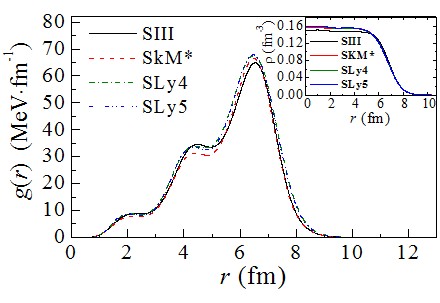Researchers in the Theoretical Physics Group at Institute of Modern Physics, Chinese Academy of Sciences (IMP) have investigated the origin of symmetry energy in finite nuclei and the density dependence of the symmetry energy of nuclear matter around the saturation density.
Based on the Skyrme energy density functional, researchers derived directly the density functional for the symmetry energy, and obtained the spatial distribution of the symmetry energy of a finite nucleus (Fig. 1). It was found that the surface part of a heavy nucleus contributes dominantly to its symmetry energy compared to its inner part. The symmetry energy coefficient was then directly extracted and the ratio of the surface symmetry coefficient to the volume symmetry coefficient κ was estimated, which agrees with that obtained from the measured nuclear masses.
In addition, with the help of experimental alpha-decay energies, a macroscopic method was developed to determine the symmetry energy coefficient of heavy nuclei. This result was used to analyze the density dependence of the symmetry energy coefficient of nuclear matter around the saturation density, furthermore, the neutron skin thickness of 208Pb was deduced. They found that slope and curvature parameters are L = 61±22 MeV and Ksym = −109−70+71 MeV, respectively. The neutron skin thickness of 208Pb was then estimated to be 0.191 ± 0.032 fm, which is consistent with the pygmy dipole resonance studies.
The symmetry energy relates the heavy ion reactions, stability of superheavy nuclei, fusion cross sections and structures, composition and cooling of neutron stars. Many theoretical and experimental efforts have been performed to its density dependence. However, this problem remains unsolved.
The results have been published in Phys. Rev. C 87, 014303 (2013)
The article can be linked as follows:http://prc.aps.org/abstract/PRC/v87/i1/e014303

Fig.1 Symmetry energy density spatial distribution in 208Pb. (Image by IMP)

